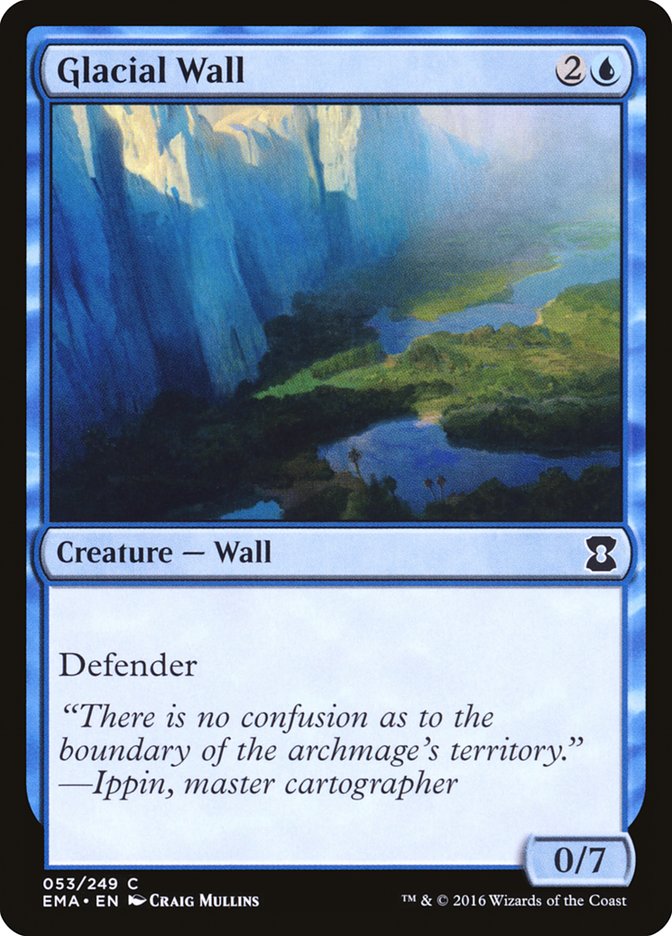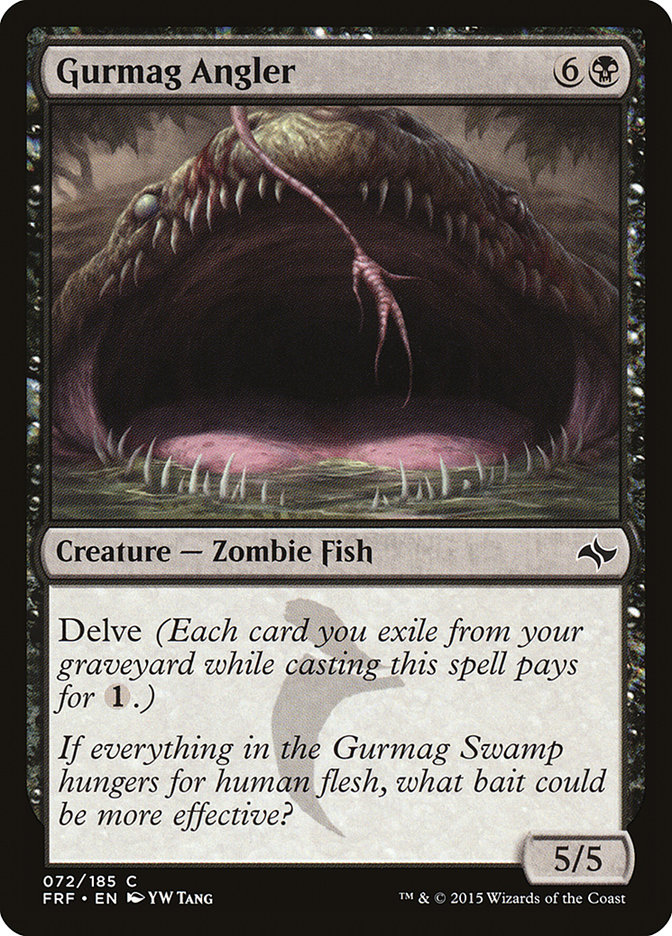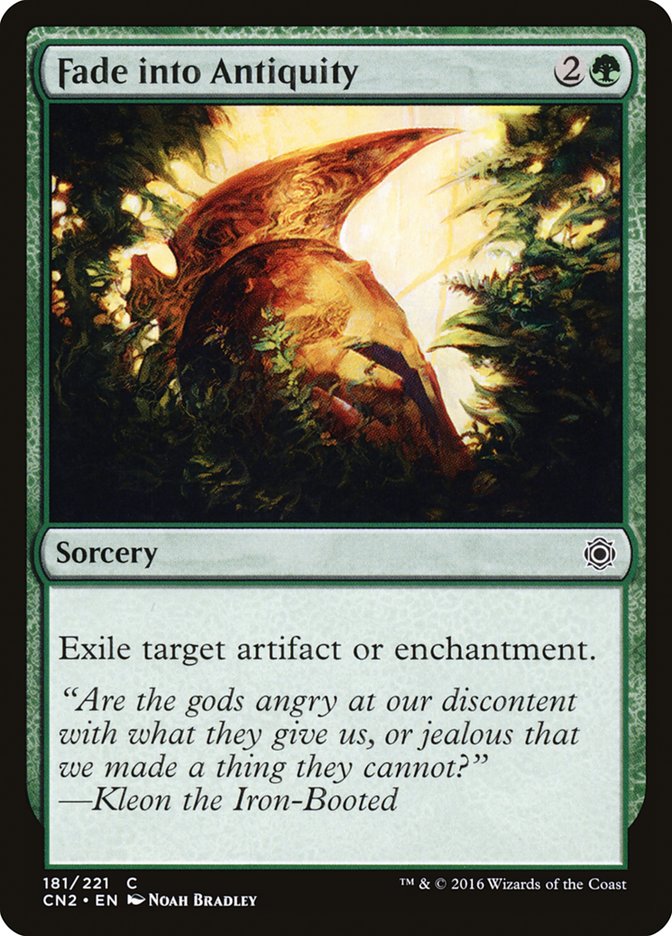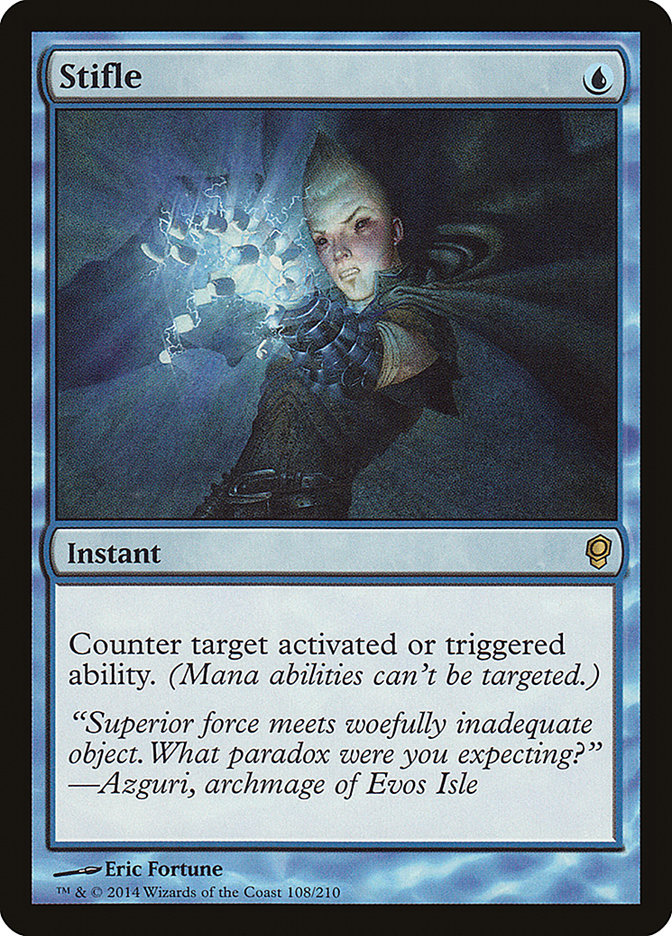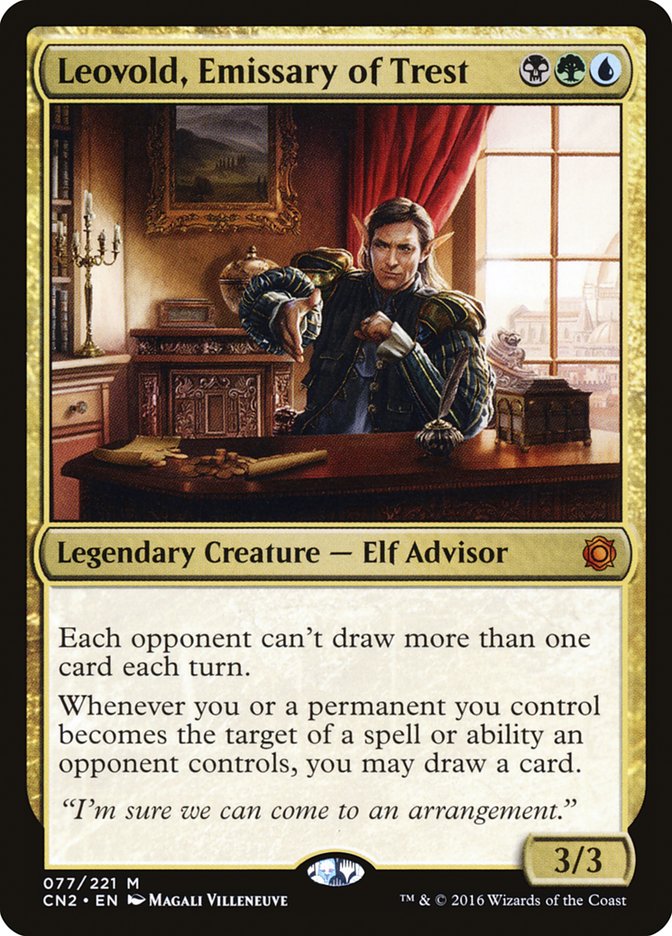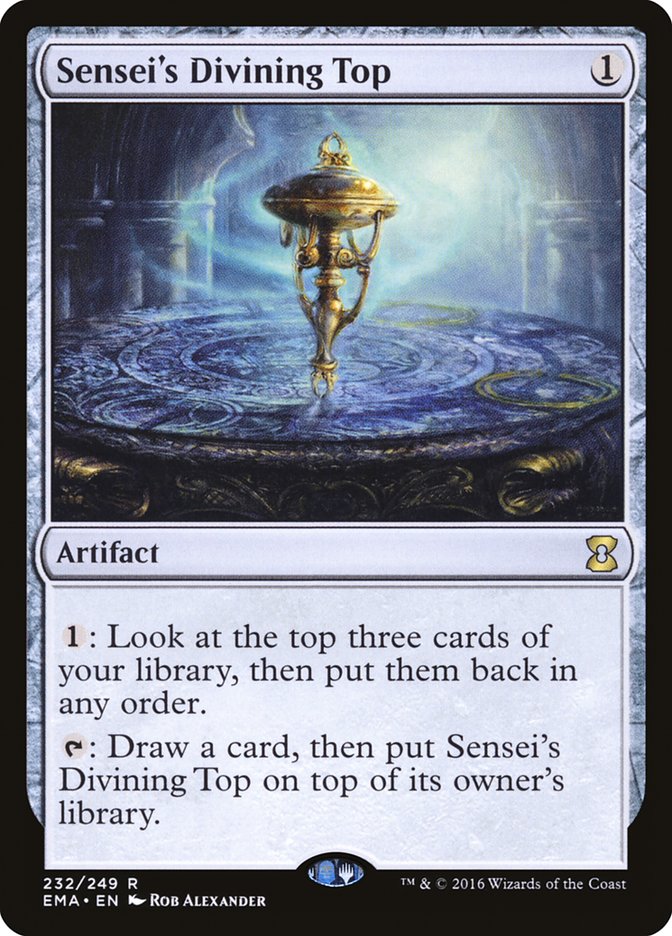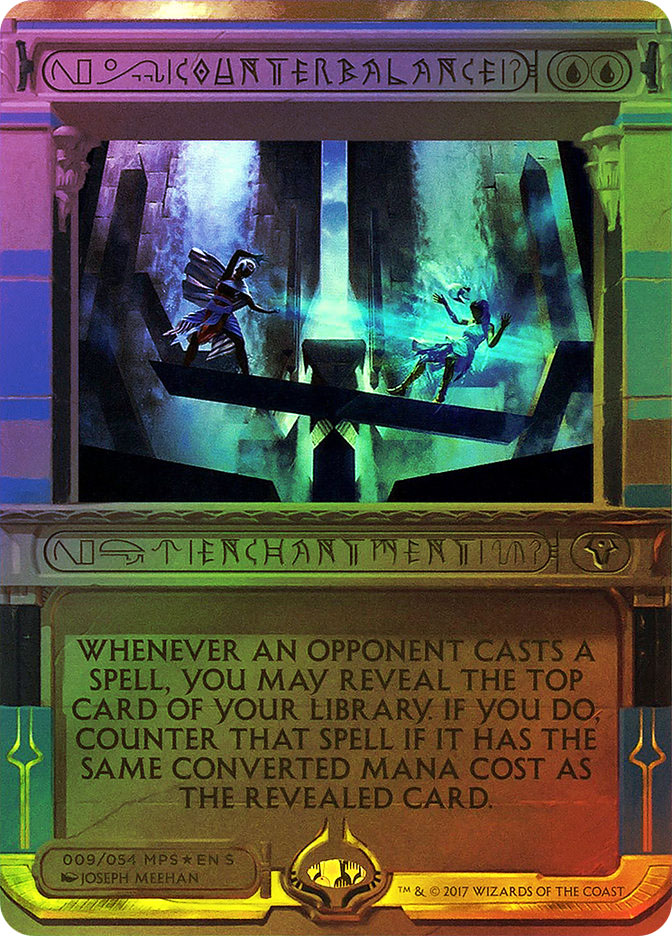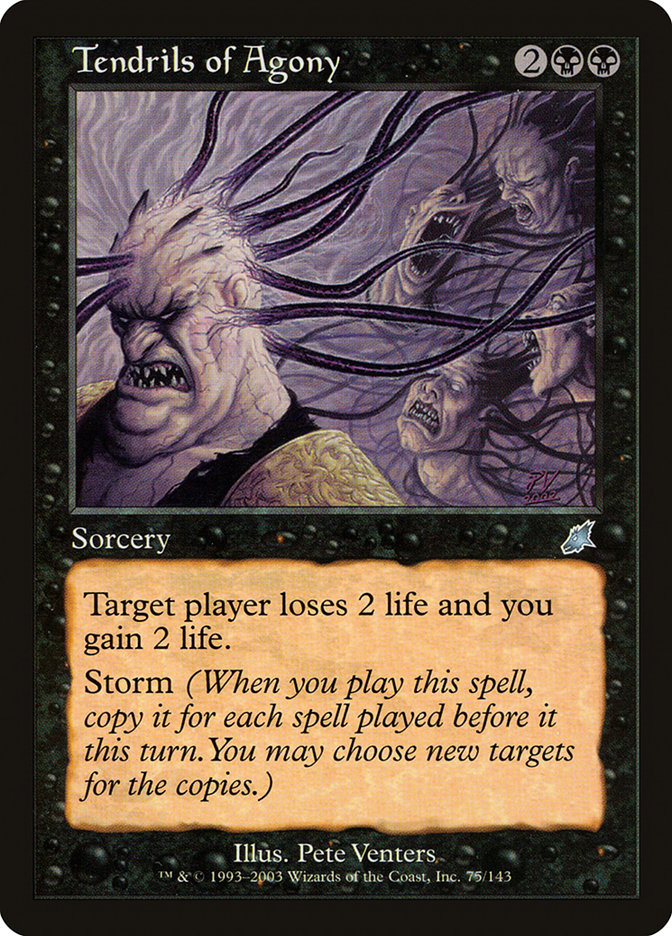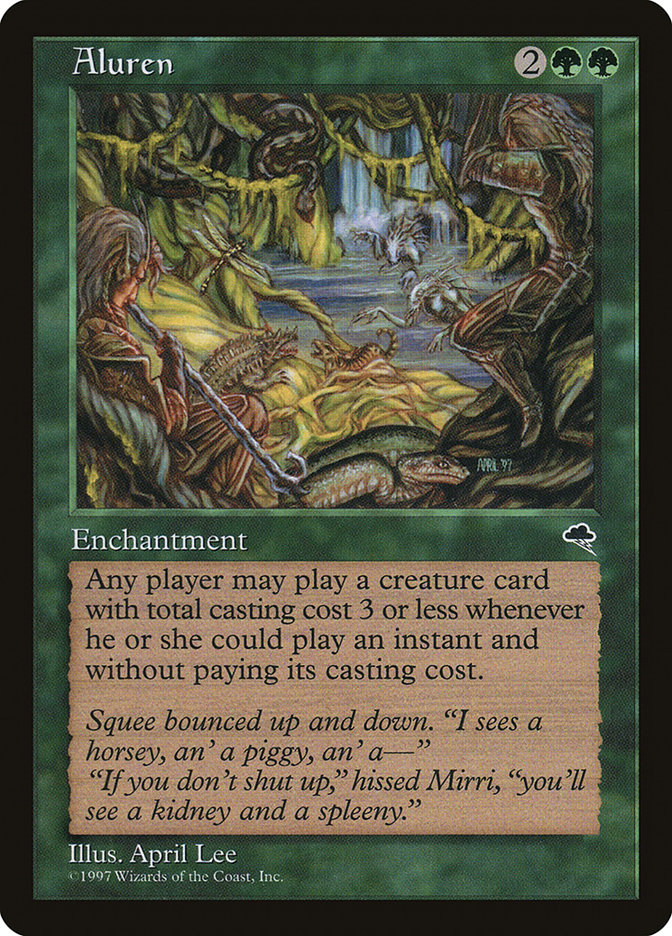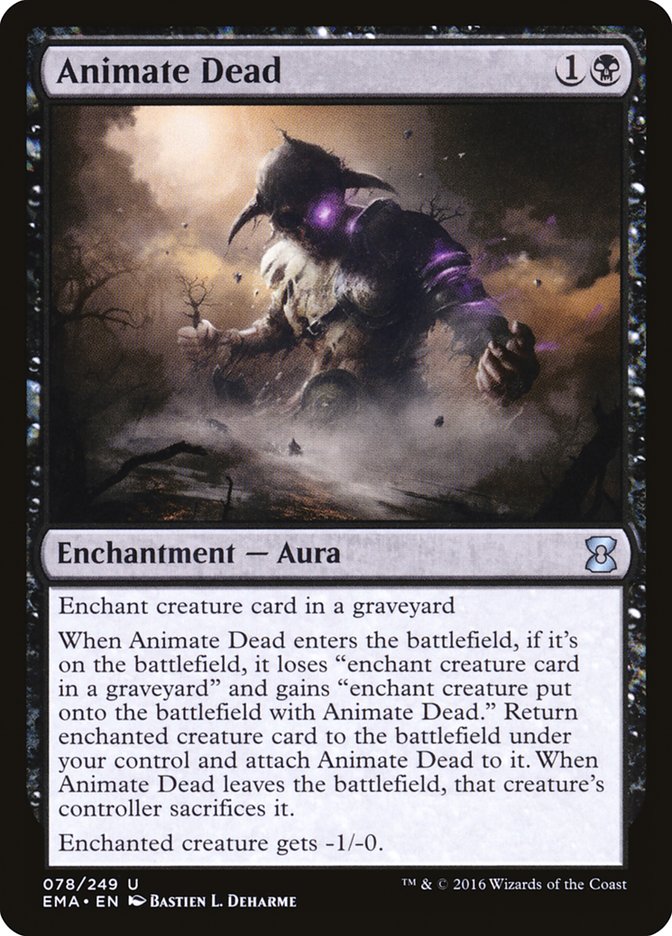Legacy is a big format. If my quick card search is to be believed, it currently has 16,386 unique legal cards! As a general rule, the bigger a format is, the more slowly it changes. Often, it feels like formats like Legacy dam the rivers of change and exist in idyllic, predictable equilibrium for long periods at a time until the dam inevitably breaks and waves upon waves of change come crashing in. Said waves take the form of new decks unleashed upon the world, old decks invalidated by new hate, new cards suddenly popping up in every deck, and even old cards making a sudden unexpected comeback, helped along by the new releases.
These moments of tremendous change are important and exciting. Because they’re important, we remember them. Because they’re exciting, we dwell on them. Remembering them is great, as previous moments of turbulence can help us prepare for future significant changes. Dwelling on them, however, is a problem.
You see, the rivers of change may be dammed in Legacy, but the dam is a shoddy bit of construction. There are holes in the dam that allow small bits of change to constantly trickle in. The excitement of the big moments of change makes them overshadow the smaller changes in our minds. This is a cognitive bias we need to overcome if we want to maximize our win rate.
So you might’ve guessed there’s a small change to the Legacy scene I want to talk about today. You see, the format has lost a barometer. From Merriam-Webter:
barometer (n) : something that indicates fluctuations (as in public opinion)
Creatures (12)
Lands (18)
Spells (30)

For a long time, Temur Delver served as a barometer for the positioning of Stifle in the Legacy metagame. Temur Delver was a constant in Legacy, always seeing a respectable amount of play while sometimes being the best choice for a given weekend. Stifle was the soul of Temur Delver, the core of the deck and what differentiated it from other Delver of Secrets strategies. Other decks played Stifle, but Temur Delver was the Stifle deck. When Temur Delver did poorly on a weekend, the reason could always be traced to Stifle being poorly positioned, and when Temur Delver did well, you can be sure that people weren’t ready for the power of Stifle.
The correlation between the success of Temur Delver and the positioning of Stifle was so strong that the two became intertwined in our collective consciousness. If you wanted to know how good Stifle was in any given moment, you went and checked how well Temur Delver was doing, and if you wanted to know if you should play Temur Delver that weekend, you sat and thought about how good you expected Stifle to be. Temur Delver was an excellent barometer for the strength of Stifle, and we grew reliant on using it as such.
But then the dam burst yet again and change was unleashed upon the fields of Legacy. You could ask ten people what killed Temur Delver and get ten different answers, all with some element of truth to them. Personally, I blame Gurmag Angler.
The printing of a 5/5 roadblock was a big problem for Temur Delver players. No longer were their Tarmogoyfs guaranteed to rule the ground against an opponent whose mana had been severely stunted. Gurmag Angler’s true mana requirement of only a single black mana meant that Daze was not a reliable answer and that no level of mana disruption could stop a topdecked mana source from casting Gurmag Angler. Once it was on the battlefield, Angler was virtually impossible for Temur Delver to remove or attack through, making winning very difficult. And so Temur Delver faded into the history of Legacy.
Temur Delver not being what it once was is old news in Legacy these days. Sure, it still pops up in events now and again, but it’s been reduced to a mere shell of its former self. But the effective loss of Temur Delver in the Legacy format is not the small change I want to talk about. No, that’s a large change that I think is fairly well accepted at this point.
The small change I’m worried about is the loss of our Stifle barometer.
For the first time in years in Legacy, the fact that Temur Delver is not performing well does not indicate that Stifle is similarly poorly positioned. Of all the possible reasons you could be given for why Temur Delver is bad now, I doubt any of them were that Stifle is just not good. The strength of Stifle in Legacy should be as cyclical as ever. We’ve relied on our Stifle barometer for too long and in many ways are now blind to the potential of Stifle. It’s time to relearn how to gauge the strength of Stifle in Legacy and decide anew if the time has come for the return of Stifle to a place of prominence in Legacy.
The Impact of Leovold and the Stifle Cycle
In the absence of Stifle from high levels of play, manabases are currently stretched a little further than they normally are.
In part, this is just because, without Stifle hanging around and keeping everyone honest, they can stretch like this. This is why the strength of Stifle has always been very cyclical. When Stifle does well and developing a functional manabase is a question in every match, players start building their decks to thrive in a mana-poor world. They play more basics to be Wasteland-proof and even play a higher land count altogether, making them as good as possible against the mana denial strategies.
It’s worth saying a few words about how playing basics minimizes the impact of Stifle. After all, Stifle interacts with fetchlands, not duals or basics. The thing is, no deck ever plays Stifle on its own. No, Stifle is always played in tandem with Wasteland. Only together can they truly punish greedy manabases. Basics go a long way towards accomplishing this, as a single basic Island in a list means that one fetchland activation resolving guarantees access to blue mana for the rest of the game.
After players start adjusting to handle mana denial, Stifle strategies start to fall off and players start to push their mana again to gain an edge against the non-Stifle decks. This arms race escalates until manabases are once again pushed to their limits and Stifle decks come back with a vengeance. This is how it used to work, until the premier Stifle deck fell off the map entirely. Now we are at the point in the cycle where Stifle decks should come roaring back, and we’ve been there for a while. No Stifle deck sees enough play to cause the metagame to shift back towards safe manabases.
If Magic were taught in schools, they would teach the above immediately after the Water Cycle and call it the Stifle Cycle. I’m sure children would find it just as fascinating. But there are reasons aside from the Stifle Cycle that are contributing to our current world of greedy manabases. Here’s one of them:
Leovold, Emissary of Trest’s stock is just rising and rising in Legacy these days. The card is powerful and efficient, and he just seems to get played more every week as players gain more experience with him. But take a gander at the upper right hand corner of that card picture. Black, green, blue. That is a stringent mana cost. Having the mana to cast Leovold is far from trivial, and ensuring that it consistently happens requires a manabase that is more than a tad greedy.
If you want evidence of these pushed manabases, take a look at these decklists:
Creatures (15)
Lands (19)
Spells (26)

The mere existence of Four-Color Delver is testimony to pushed manabases. This deck is playing Abrupt Decay and Lightning Bolt. Only nineteen lands to support this nonsense, and four of them are Wasteland. This isn’t me talking smack about Four-Color Delver; I think it’s great, and it’s actually what I’ve been playing lately in Legacy. But we’re kidding ourselves if we think the mana is anything besides hideously greedy. And hey, look at those copies of Leovold, Emissary of Trest in the sideboard.
Creatures (15)
Planeswalkers (3)
Lands (21)
Spells (21)

Reid Duke won Grand Prix Louisville with this deck. Only three colors, but take a look at some of the mana choices. 21 lands in a Jace, the Mind Sculptor deck without Sensei’s Divining Top is on the low side; Reid compensates by playing Noble Hierarch. But moving mana from lands to creatures is a move towards greed, as creatures are far more fragile than lands, even in Legacy. There are also only two basics in the list, a definite sign of disrespect for Wasteland and Stifle.
Creatures (6)
Planeswalkers (2)
Lands (21)
Spells (31)

Miracles deepening its splash for red past a single Volcanic Island for Pyroblast out of the sideboard is a definite sign that they aren’t worried about their mana being heavily attacked. And take a look at those copies of Blood Moon in the sideboard. If Miracles thinks manabases are vulnerable right now, Stifle ought to be plenty good.
The Homogeneity of Delver Strategies
Another recent change to the Legacy metagame is the push towards midrange in Delver strategies. Temur Delver was the purest aggro-tempo version of Delver and, aside from U/R Delver Burn, the lowest to the ground. In Temur’s absence, the intra-Delver metagame has become a midrange arms race. With no Temur Delver to punish other Delver strategies that try to go too big, they have all been forced to adopt more midrange elements to hold onto equity in the mirror.
Without turning into a burn deck (a la U/R Prowess), the only way to stay low to the ground in Delver strategies is Stifle. Stifle gives that key additional amount of disruption that keeps the game in early stages long enough for Delver to find a win before the opposing strategy comes online. With Delver strategies consistently going for the midrange approach rather than the Stifle disruption avenue, other decks have adapted.
Miracles is doing better than ever in a world of midrange Delver strategies. Reduced risk of an early death and less pressure on the mana is a perfect world for Miracles. Stifle is exceptionally good against Miracles; even aside from the additional pressure it puts on the Miracles manabase, little tricks like countering a miracle trigger are a huge boon. With the Miracles share in the metagame on the rise, Stifle feels like a great place to be.
Delver strategies moving towards midrange has also changed how various combo decks attack the Delver matchup. It’s not that midrange Delver is inherently worse against combo, but fighting as combo against midrange Delver and Stifle Delver is very different. Stifle Delver tends toward playing more pieces of less powerful disruption, while midrange Delver relies on a few very powerful pieces of interaction, often discard.Stifle is fairly hit-or-miss against these decks in roles other than mana denial, sometimes great and sometimes worthless. The mana denial role, however, is consistently good and often game-winning. Playing a Stifle strategy in today’s world would attack the combo decks from an angle they aren’t expecting and likely improve the matchup.
Using Stifle Today
All right, so we’ve decided that playing Stifle is a decent place to be right now. But with the de facto Stifle deck not the powerhouse it once was, what deck are we supposed to play Stifle in?
Creatures (12)
Lands (18)
Spells (30)
- 4 Brainstorm
- 4 Lightning Bolt
- 4 Force of Will
- 1 Chain Lightning
- 4 Daze
- 4 Stifle
- 4 Ponder
- 3 Spell Pierce
- 2 Dismember
Sideboard

Well, we could try to dust off the old classic. The good news for Temur Delver right now is that Leovold, Emissary of Trest has stolen a little play from True-Name Nemesis. True-Name was a huge problem for Temur, while Leovold is bad but beatable. That’s a win. Gurmag Angler is also seeing less play than it was upon release, another win. Playing Dismember is a necessity right now, and I really like the idea of having seven total removal spells to kill Deathrite Shaman, a ubiquitous card that puts a huge damper on our mana denial plan. Still, I’m not totally sold on the idea that Temur Delver can handle the new world of Legacy.
Creatures (13)
Lands (18)
Spells (29)

Or we could try something new. The printing of Fatal Push has allowed for this Sultai Delver list that is spiritually more of a color-shifted Temur Delver deck than a traditional Sultai Delver deck. Classic Sultai Delver lists play Hymn to Tourach and are all-in-all different enough that this to be different decks, regardless of being in the same colors. This deck wasn’t possible before Aether Revolt, as anything resembling Temur Delver needed a Lightning Bolt equivalent. Fatal Push is that equivalent, losing only the face-damage capabilities of Lightning Bolt. This list compensates for the loss of that face damage by playing a slightly more midrange game, accepting that games won’t end quite as quickly. It eschews Nimble Mongoose in favor of using its graveyard for Gurmag Angler and utilizes the now-familiar Deathrite Shaman plus three-drops package. All in all, it feels like a Temur Delver for the modern age.
I love the look of the Sultai Delver deck, but I’m not quite sure yet what I will be playing at SCG Worcester this weekend. It’s safe to say, however, that I am very likely to be slinging some Stifles come Saturday.


